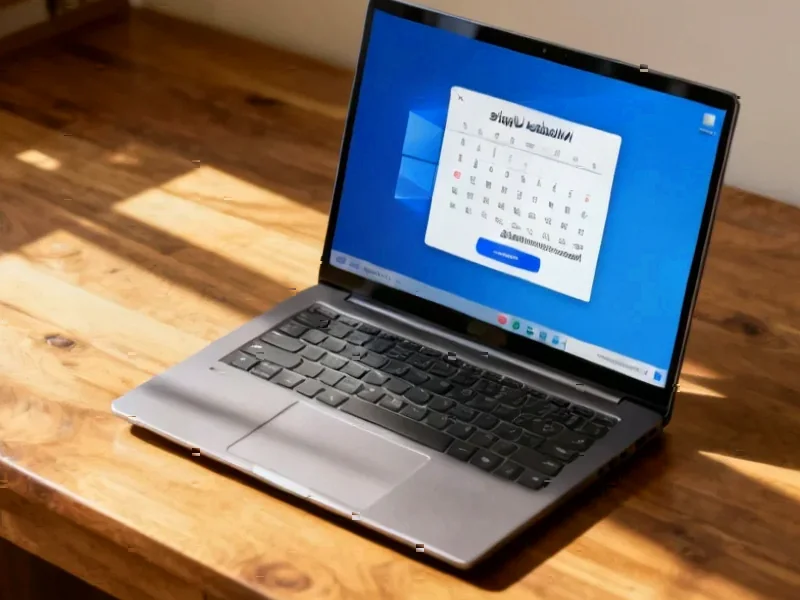According to Wccftech, Minisforum has launched the MS-R1, the first mini PC based on China’s Cixin P1 processor developed by CIX Technology. The device features a 12-core ARM processor built on a 6nm process with a heterogeneous configuration mixing Cortex-A720 performance cores and Cortex-A520 efficient cores clocked between 1.8 GHz and 2.6 GHz. First showcased at Computex 2024, the system includes an integrated Immortalis G720 GPU, supports LPDDR5 memory up to 64GB, and remarkably features a PCIe 4.0 x16 slot for discrete GPU expansion. The compact chassis measures 196 x 189 x 48 mm and weighs 1.35 kg, running a custom Debian 12 OS with AI performance reaching 30 TOPS through a dedicated NPU. This development signals a significant shift in computing architecture that deserves deeper analysis.
China’s Semiconductor Independence Accelerates
The Cixin P1 processor represents China’s most sophisticated attempt to date at creating a viable domestic computing ecosystem independent of Western technology. While previous Chinese ARM efforts focused primarily on mobile and embedded applications, this desktop-class implementation with PCIe expansion capabilities demonstrates remarkable maturity. The timing is strategic—as US export controls continue to restrict China’s access to advanced x86 processors from Intel and AMD, developing competitive ARM alternatives becomes both an economic necessity and national security priority. The 6nm manufacturing process, while not cutting-edge by global standards, shows China’s semiconductor industry is closing the gap despite significant technological headwinds.
ARM’s Desktop Disruption Expands
Minisforum’s move could accelerate ARM’s invasion of traditional x86 strongholds beyond Apple’s successful transition. The inclusion of a PCIe x16 slot is particularly significant—it transforms what would typically be a limited-purpose ARM device into a potential workstation replacement. This addresses one of ARM’s biggest historical limitations on desktop: limited expansion capabilities. For developers working on ARM software porting, cloud infrastructure testing, or embedded systems development, the MS-R1 offers an affordable platform with workstation-class connectivity. The Japanese coverage indicates strong interest in Asian markets where ARM adoption has been more rapid than in Western markets.
Mini PC Market Faces Architectural Divide
This launch creates a fascinating bifurcation in the mini PC market between traditional x86 systems and emerging ARM alternatives. While Intel and AMD dominate the performance segment, Chinese ARM solutions could capture the efficiency-focused and cost-sensitive markets. The power efficiency advantages of ARM architecture combined with China’s manufacturing scale could enable aggressive pricing that x86 competitors would struggle to match. We’re likely seeing the beginning of a computing architecture cold war where geopolitical factors increasingly influence technology adoption patterns. The platform’s developer focus suggests Minisforum is targeting early adopters who can help build the software ecosystem necessary for broader adoption.
The Software Hurdle Remains Substantial
Despite the impressive hardware specifications, the MS-R1’s success ultimately depends on software compatibility and developer adoption. The Linux-only approach limits immediate mainstream appeal, though it strategically targets the developer community most capable of advancing the platform. China’s technology independence strategy must include not just hardware but also software ecosystem development. The custom Debian distribution suggests recognition of this challenge, but competing with the decades of software optimization available for x86 platforms represents a monumental task. However, the 30 TOPS NPU performance indicates where China sees competitive advantage—AI workloads where software stacks are still evolving and architectural advantages can be more easily established.
Geopolitical Computing Implications
The MS-R1’s emergence has implications far beyond consumer computing. It represents China’s determination to create parallel technology stacks immune to Western sanctions. For governments, military applications, and critical infrastructure in China and allied nations, having domestic computing alternatives becomes strategically vital. The timing coincides with increased US restrictions on AI chip exports to China, making domestic AI-capable processors like the Cixin P1 increasingly important. While the MS-R1 itself may not immediately threaten Intel or AMD’s market share, it demonstrates China’s progressing capability to develop competitive computing solutions without Western technology—a trend that could reshape global tech supply chains over the next decade.




